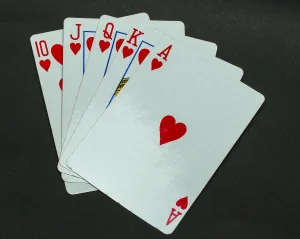The Anatomy of a Slot Machine How Do They Work?

Most slot machines use a random number generator to determine the outcome of each spin. This computer program simulates randomness, and the outcome of each spin is independent of previous ones.

A player pulls a handle or pushes a button to rotate a series of reels with pictures printed on them. If the symbols line up on a pay line, you receive a payout.
Reels
The concept of a slot machine is simple enough: put money in, pull the handle and hope that the reels line up for a payout. Although slots have evolved over the years, they still work on the same principle.
Modern machines use a random number generator to produce a sequence of probable results, and this system replaces the original spinning wheel that used to determine where the reels would stop. A random number is generated each second, and the computer consults a table to determine where each actual stop on a real reel should land based on that number.
The reels can be made to wiggle, jump or dance a jig, but they will always display the result of this computer consultation. The only exception is when a player asks the machine to “hold” one or more reels.
Paylines
Paylines are the lines on a slot machine that run horizontally and vertically and determine whether you win or lose. They can appear in a variety of shapes, from straight horizontal lines to zig-zag patterns. Typically, you need at least three matching symbols on neighboring reels to build a winning combination. The more matching symbols you have on a payline, the higher your payout will be.
While some slot games allow you to choose your paylines, others have predetermined winning lines that you can’t alter. The paylines are usually described in the game’s instructions and will be highlighted on the grid to show you how they work. While the rules can vary between different slots, winning combinations on a payline are always paid from left to right.
Symbols
A slot’s symbols appear on a grid and when they line up, they give players payouts. These symbols can also trigger bonus features, like free spins or a chance to win a progressive jackpot. They may be standard icons, scatters, or wilds.
The number of symbols a machine has depends on the number of reels. Traditionally, physical slots have three or five reels with a single payline in the center. However, they can be equipped with more than one payline, creating different patterns and offering more ways to win.
Many classic slot symbols have survived the test of time, including cherries, lemons, and lucky sevens. These are typically accompanied by bars and numbers, which can be doubled or tripled to create more winning combinations.
Bonus rounds
The random number generator (RNG) is an important part of slot machines’ design. This computer program determines the results of each spin and ensures that players are treated fairly. Older mechanical slot machines used revolving reels to display symbols and determine winning combinations, but modern video slots use digital step motors to spin virtual reels and an algorithm to control them.
The RNG is also what allows slot games to offer progressive jackpots. These jackpots can be as small as $0.01 or as large as a million dollars.
Bonus rounds are a way to keep players engaged and increase their chances of winning. These extra game rounds typically feature mini-games that resemble a game within a game. They are designed to reward players for their skill and not luck.
RTP
The RTP of a slot machine is one of the most important factors to consider when choosing a game. It dictates how often a slot machine pays out, and how much you’re likely to win. Having this information will help you avoid making reckless gambling decisions and play more responsibly.
While traditional mechanical slot machines gave way to electrical ones, they worked on the same principles. A spinning reel shows pictures on the display window and a series of lights tell you whether you have won or lost.
Modern electronic slots use random number generators to determine where each reel should stop, so winning is determined by a combination of luck and skill. These systems also allow for new features that weren’t possible with mechanical reels.








